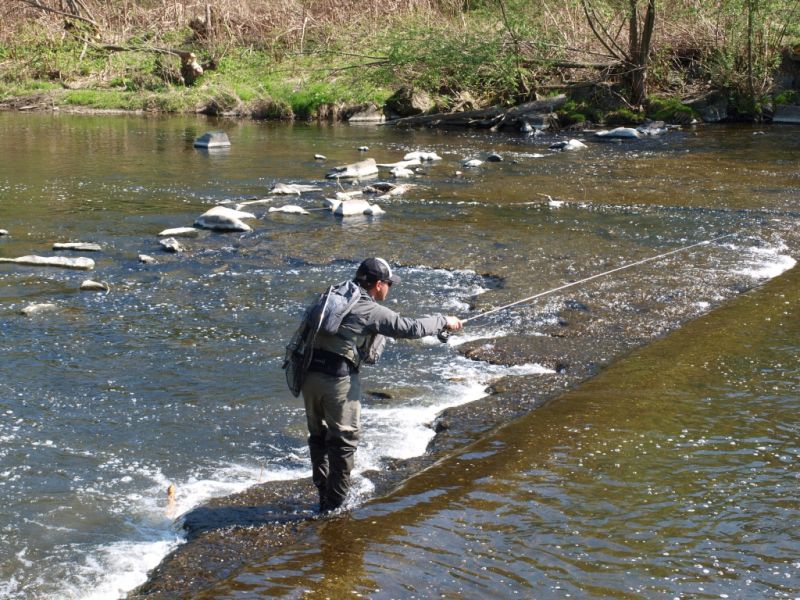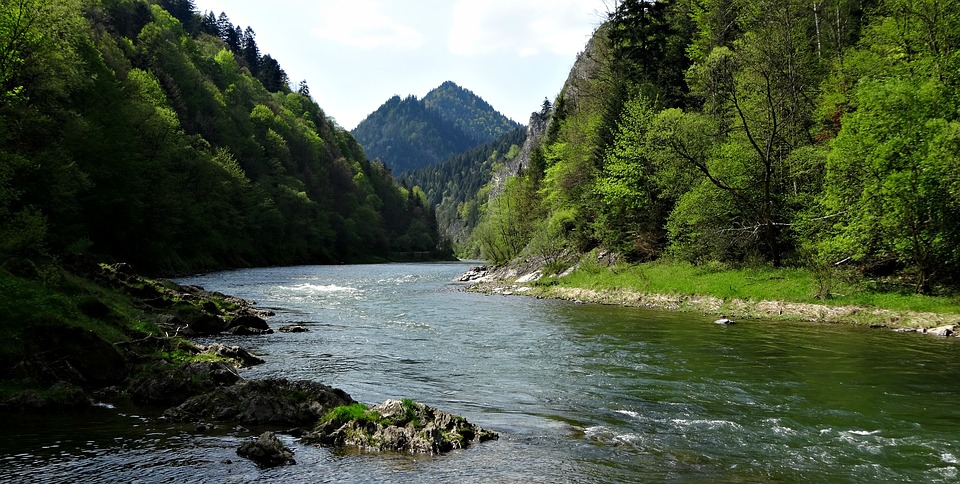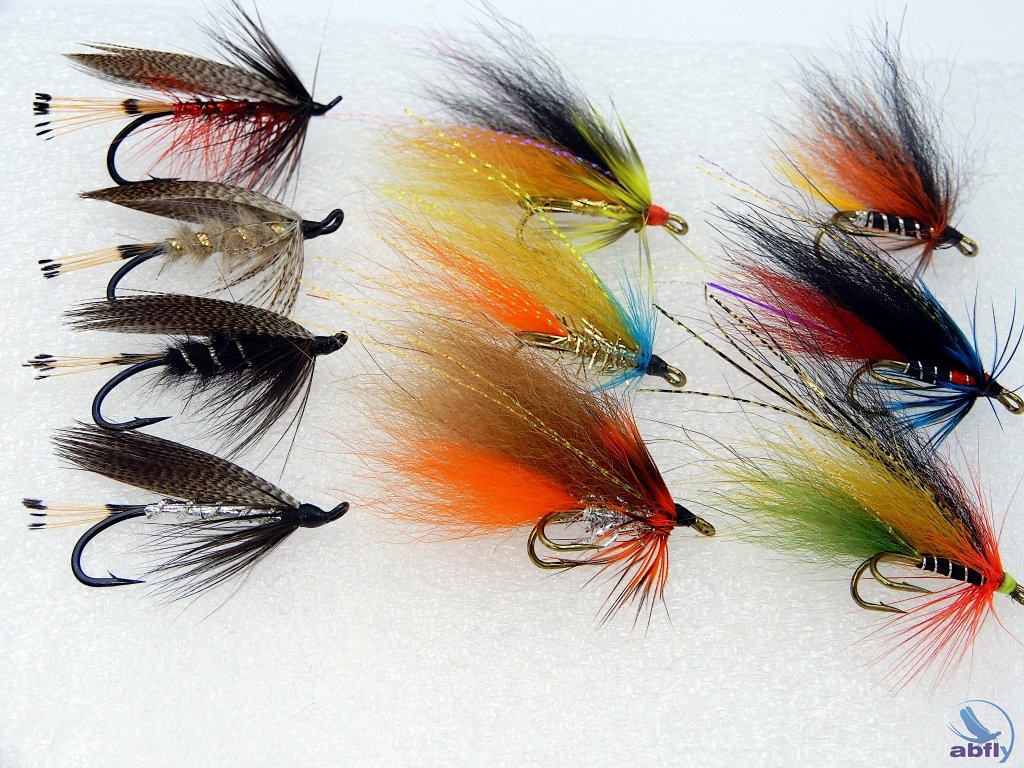Fly fishing is still not very popular in Poland, even though it is a very old and effective fishing method. It consists in catching fish with an artificial fly, which is a hand-made imitation of a natural bait.
You can start fly fishing by choosing the right fishing spot. There are many rivers, lakes and ponds in Poland where you can practice this form of fishing. The main thing is to find a place where there are fish that interest us. Many lakes and rivers in Poland are rich in sea trout, trout, grayling or chub, but there is no universal place where you can catch each of these fish.

After choosing a place, it is worth reading the fishing regulations to make sure that the lake or river we choose is not a protected area where fishing is prohibited. The regulations also include information on the minimum size of fish that can be caught, as well as prohibited fishing methods.
Once you choose a place to fish and familiarize yourself with the regulations, it's time to choose the equipment. Fly fishing requires specialized equipment, which is available in fishing shops. The most important element is the fly rod, which should be between 8 and 11 feet long. In fishing shops, there are rods made of various materials, such as graphite or bamboo. It is important to properly match the rod to the weight of the fly and the fishing conditions.
For the rod you will also need a reel, a fly line of fishing lines of different thicknesses. It is worth investing in good quality equipment that will allow you to fish in comfortable conditions and bring better results.
Once you have the right equipment, it's time to choose your flies. In Poland, fly fishing has become popular thanks to many enthusiasts who make artificial flies themselves. In fishing shops we can find ready-made models, but many people decide to make them themselves, which allows you to adjust the fly to specific fishing conditions. Also in our online store you can find materials for making artificial flies.
Artificial flies can be divided into dry, wet, nymphs and streamers. The choice depends on many factors, such as the type of fish, place of fishing, season or weather conditions.
The beginnings of fly fishing may seem difficult and complicated, but with the right knowledge and skills, you can start fly fishing without major problems. The first step is to buy the right fishing equipment. It is worth starting with the basic set, which consists of a rod, reel, line and bait. We choose a fly fishing rod depending on the type of water on which we intend to fish. For fishing smaller rivers and streams, a rod of approximately 2.7 meters will suffice, while for fishing on larger rivers and lakes you will need a rod of at least 3.6 meters.
The next important step is to learn fly casting. There are many throwing techniques, but for beginners, the diagonal throwing technique is the best. It consists in throwing a fly at an angle of 45 degrees to the water current, which enables us to cast longer and more precisely. This technique can be easily mastered in the pool or on dry ground before moving on to throwing in the water.
In Poland we have many beautiful rivers and lakes where you can fly fly. Most anglers visit mountain rivers such as the Dunajec, Biała, Wisła, the upper section of Ropa, Skawa Soła or San. It is in the mountain rivers that the most beautiful trout and grayling live. To catch these fish, you need a shorter rod length as the rivers are narrower and more stony.

In Poland, fly fishing is most common for trout and grayling, but it is also possible to catch other species of fish. Species that live in streams and rivers, such as sea trout, Danube salmon, chub and whitefish, are particularly suitable for fishing. In the lakes you can catch perch, zander, pike, bream, carp, tench and catfish. Each of these species, however, requires a slightly different technique and special equipment, so before you go fishing, it is worth considering what kind of fish you want to catch and prepare accordingly.
For fly fishing we need special equipment. The basic element is, of course, a fly rod, which is much lighter and more delicate than a traditional spinning or ground rod. Fly rods are divided into two groups: one-handed and two-handed. One-handed fly rods are lighter and easier to handle, which is why they are usually recommended for novice anglers. Two-handed fly rods, however, have a longer cast, so they are often used for catching large fish in large rivers or lakes.
For a fly rod you also need a reel with a movable spool that will allow you to wind the backing and the line.
Fly fishing also requires fly lines that are specially designed for fly fishing. These are usually PE cords, i.e. weight forward, which enable further and precise throwing of the fly. They are available in different variants, differing in color and weight, so it is worth considering which one will be the best for our fishing technique.
An important element is the fly line, which is used to throw artificial flies. Fly lines differ in length, weight and profile, which affects their buoyancy.
A 25-30 meter fly line is a good choice for novice fly anglers as it provides easy and controlled casts.
A reel is an essential element of fishing equipment for fishing with an artificial fly, a reel with a moving spool is needed.
The last but very important element of fishing equipment are artificial flies. They can be made of a variety of materials, including feathers, hair, colored threads, and artificial materials. Their shape and size depend on the type of fish we hunt.
The most common types of flies are: dry flies, wet flies, streamers, nymphs and gammarus. Each of them has its own unique characteristics and is used in different situations.

Fly fishing is one of the most fascinating and challenging forms of fishing. It is an art that requires precision, patience and knowledge, but the reward of success is extremely rewarding. Fly fishing is also a great form of relaxation that allows you to get away from everyday worries and enjoy the beauty of nature.
For beginner fly anglers, it is crucial to choose the right equipment and accessories, such as rods, reels, flies, lines, leaders and fly boxes. It is also important to know the principles of fly fishing, such as the selection of the right fly, casting techniques and proper lure handling. In Poland we have many beautiful fly fishing spots, from mountain streams to rivers flowing through picturesque landscapes.
Fly fishing is an art that requires dedication and commitment, but it is also one of the most beautiful forms of fishing that offers unforgettable emotions and the beauty of nature.